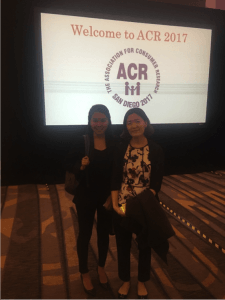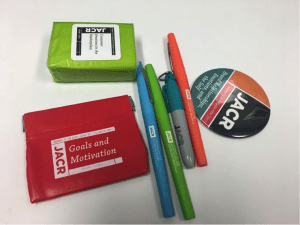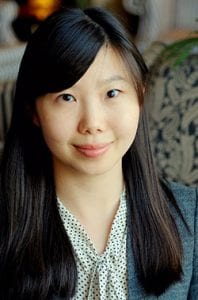By: TAI Professor Dr. Yan Huang
 It is hard to believe that it has been one year since I joined Temerlin Advertising Institute (TAI). Looking back, this is an incredible year filled with exciting opportunities and experiences.
It is hard to believe that it has been one year since I joined Temerlin Advertising Institute (TAI). Looking back, this is an incredible year filled with exciting opportunities and experiences.
TAI stands at the intersection between the advertising industry and the research community. The unique combination provides a great source of inspiration. Through many TAI initiatives over the year, I have been engaged in conversations with both top advertising scholars and industry leaders. I am able to further develop my research program not only by asking questions that are important to theories but also with the industry trends and needs in mind. As the convergence of media and technology has disrupted the landscape of advertising practice, I extended my research on traditional persuasion theories to the digital domain. I initiated research projects that explore how novel digital advertising practices such as native ads and advergames can be used to promote public health and social good. These projects received funding support from the Meadows School, the University Research Council, and the Sam Taylor Fellowship. With the support of TAI, I was able to present four research papers at the annual conferences of the American Academy of Advertising, National Communication Association, and International Communication Association.
As a professor, I always hope to help my students understand the real-world meanings of theories, and motivate them to transplant the knowledge acquired in the classroom to the world at large. Located in a vibrant city and connected to the industry community, TAI is a great place to implement this teaching philosophy. I am also impressed by TAI students’ motivation and their aptitude for making connections between the somewhat abstract academic process and their life. I have had student groups investigating consumers’ perceptions of Whole Foods after Amazon’s acquisition, exploring the use of experiential marketing strategies in military recruitment, and examining how car commercials affect gender stereotyping, just to name a few.
My collaboration with the 9-1-1 program in the North Central Texas Council of Governments (NCTCOG) in the classroom of Strategic Brand Management 2 is a highlight of this approach. Students formed four teams to perform a brand audit for the 9-1-1 program from different angles and provided executable plans for promoting its branding among the public, college students, elected officials, and telecommunication professionals. This task required the abilities to flexibly apply marketing principles in the textbook to the nonprofit context and to critically analyze real-world problems. My students excelled with their creativity, curiosity, and diligence.
Christy Williams, director of the 9-1-1 program, said, “Working with Yan and her students in the Strategic Brand Management class was a great benefit to the 9-1-1 program in the North Central Texas Council of Governments (NCTCOG). Collaboration with academia is important to our program, as we understand that times are changing and there is value in students’ perspectives. NCTCOG is very progressive with our technology and we want to keep up with our education and branding as well. The students at SMU provided new insights and ideas through their class projects. They served as a ‘fresh eye’ into our program and delivered professional constructive criticism along with proposals for improvement in their presentations. We expected advice on improving our website and social media, but were surprised with the insightful suggestions for presentations and field awareness. The suggestion to ‘focus on inspiration more than education’ could change the future direction of our awareness strategy. All in all, we found great value in the partnership. In fact, we believe that the value will continue with a group of students who took a project to heart and made a difference. Each one of them demonstrated that they are 9-1-1 champions!” It is certainly one of the most rewarding moments when I saw what students learned and accomplished in the classroom could make a difference in the real world.
I am fortunate to have the opportunity to work with a group of talented colleagues and to instill the passion for and knowledge of advertising into many gifted students. I look forward to another fruitful and joyful year.
















